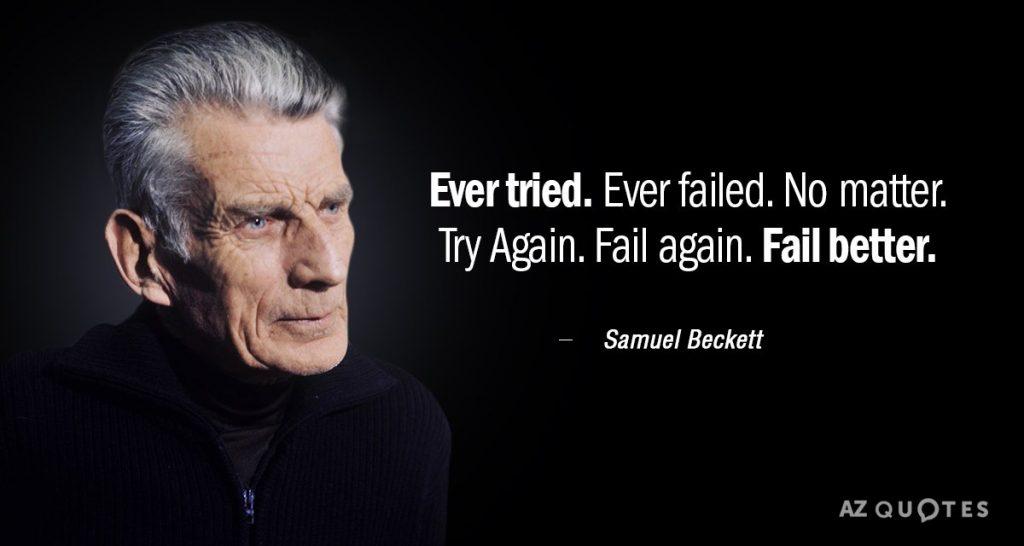Artifact 5
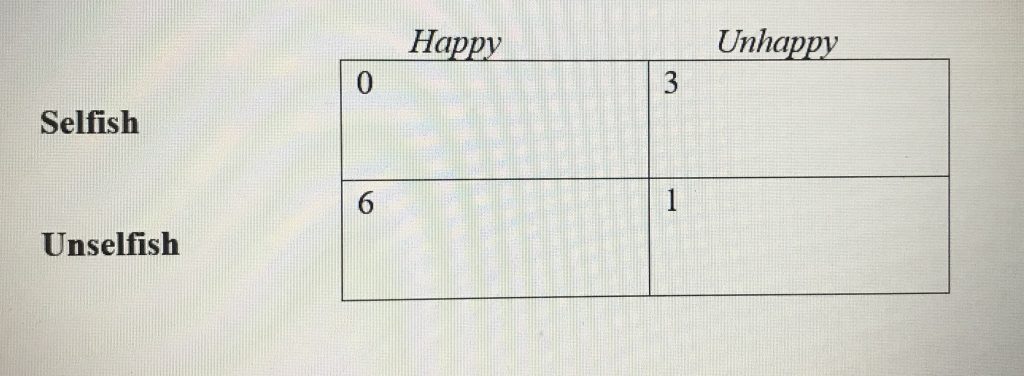
In module 11’s artifact, I wrote 10 people down and chose whether they were happy or unhappy and selfish or unselfish. With this, I seen that more people I thought of as unselfish showed that they were happy, while those who were selfish seemed unhappy. While this comes from what I’ve seen or thought about each of these people, it showed that most people who seemed happy acted unselfishly while those who seemed unhappy acted in selfish ways. This artifact showed how feelings of happiness may not come from doing things we can benefit from, but instead from acts of kindness towards others.
Artifact 4
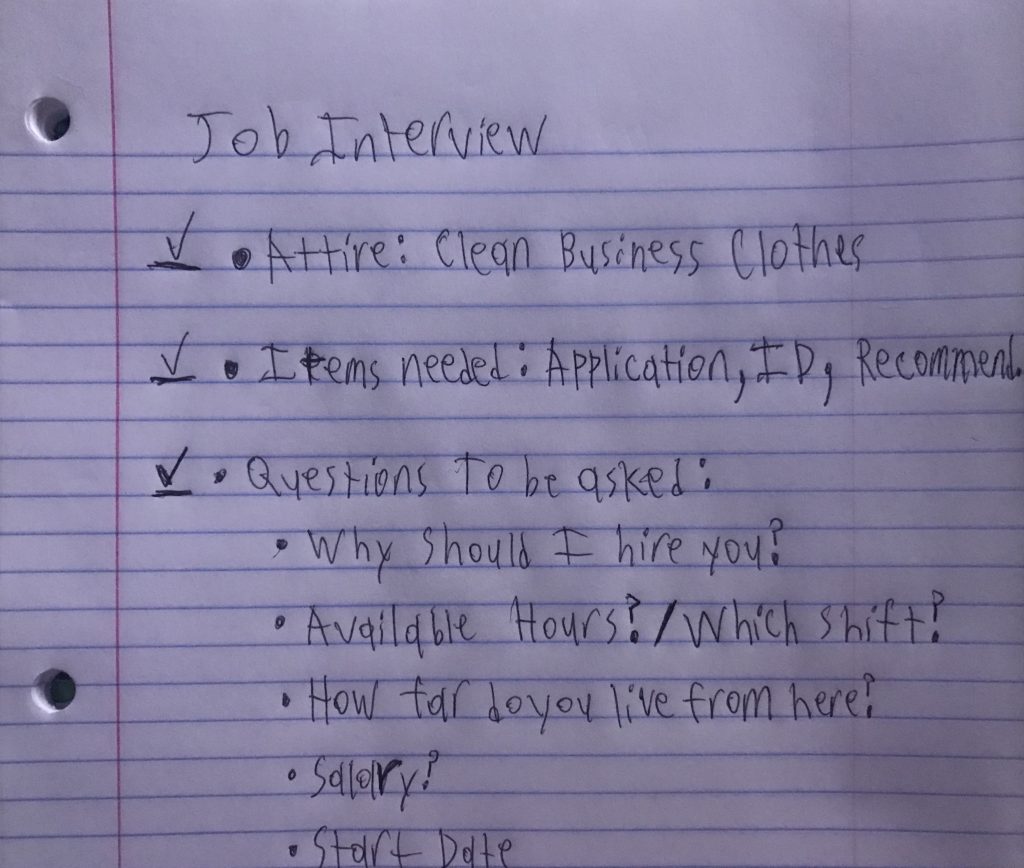
In module 5’s artifact, I thought about how I would represent myself to people in different situations. This made me think about making a good impression for each situation. In most cases, we would take proper hygiene into account, dress in business attire, and present ourselves in a positive light. While this is important, we should also plan for our conversations, such as what questions we should ask, what is important to talk about, and showing how capable we are. This module helped me realize that this type of planning can help make good impressions on future employers, coworkers, and professors.
Artifact 3
In module 7’s artifact, I participated in two surveys, one about the attitudes I have on how we should behave, one about the behaviors that I partake in. While taking both surveys, I noticed how my attitudes would not line up with my behaviors. It made me realize how we can have the best intentions, but not always follow through with those intentions. We may believe that we should go to the gym at least once a week, but we won’t always take this thought to heart. The image conveys how we may fail to keep these behaviors and attitudes aligned, we should always strive to improve ourselves. I liked this artifact for helping me realize the inconsistencies between my attitudes and behaviors. This in turn helped me align my attitudes and behaviors closer together.
Artifact 2
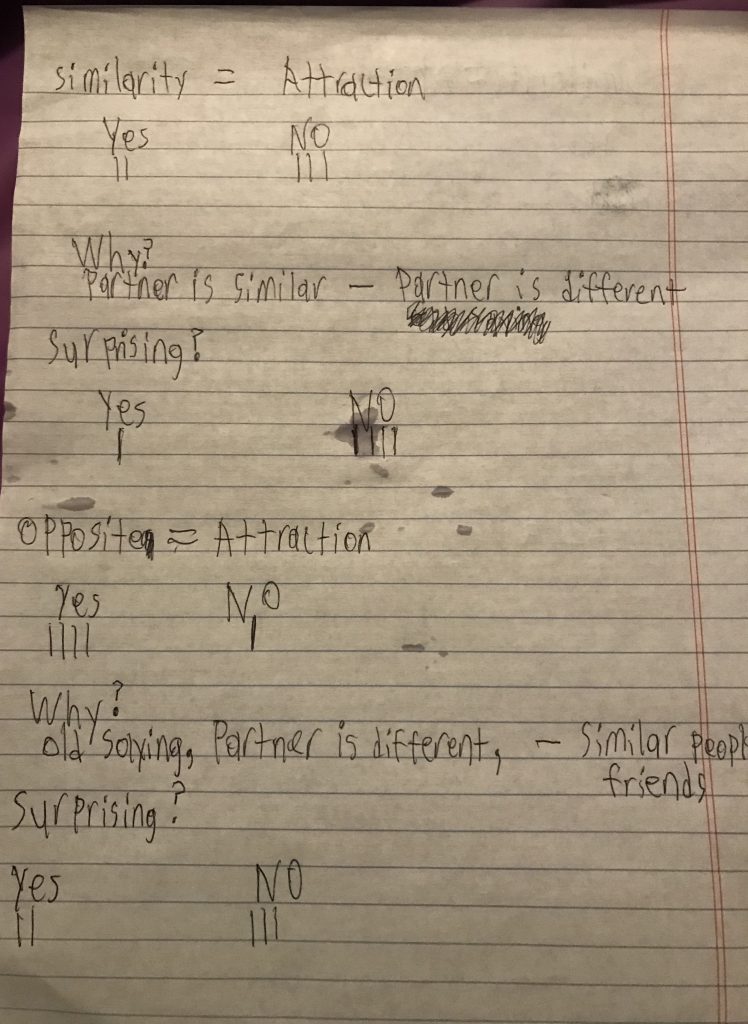
In module 3’s artifact, I was able to find ten people to try this experiment on. I had a group of five and told them that social psychologists found that similarity leads to attraction. Most believed that this was the case because their significant other would have the same viewpoints as them on most topics and eat at the same restaurants. Two out of the group found this surprising. I did the experiment again, but this time, saying that social psychologists believed that opposites do attract each other. I told five other people this and most did not find this surprising. They had always heard the old saying that “opposites attract” as well that the partner could have strengths that they did not have. For example, one of them could be able to do yard work, drive, and take on a full time job while the other could do dishes, laundry, and take care of the children. This experiment opened my eyes to the opinions on similarities and differences between a relationship could strengthen or weaken it.
This artifact allowed me to see how we can believe in both, “opposites attract” and “similarity leads to attraction”, even though they contradict each other. It also showed we can believe in what social psychologists say in the moment. While I enjoyed this artifact a lot, it was a hard choice for number one.
Artifact 1
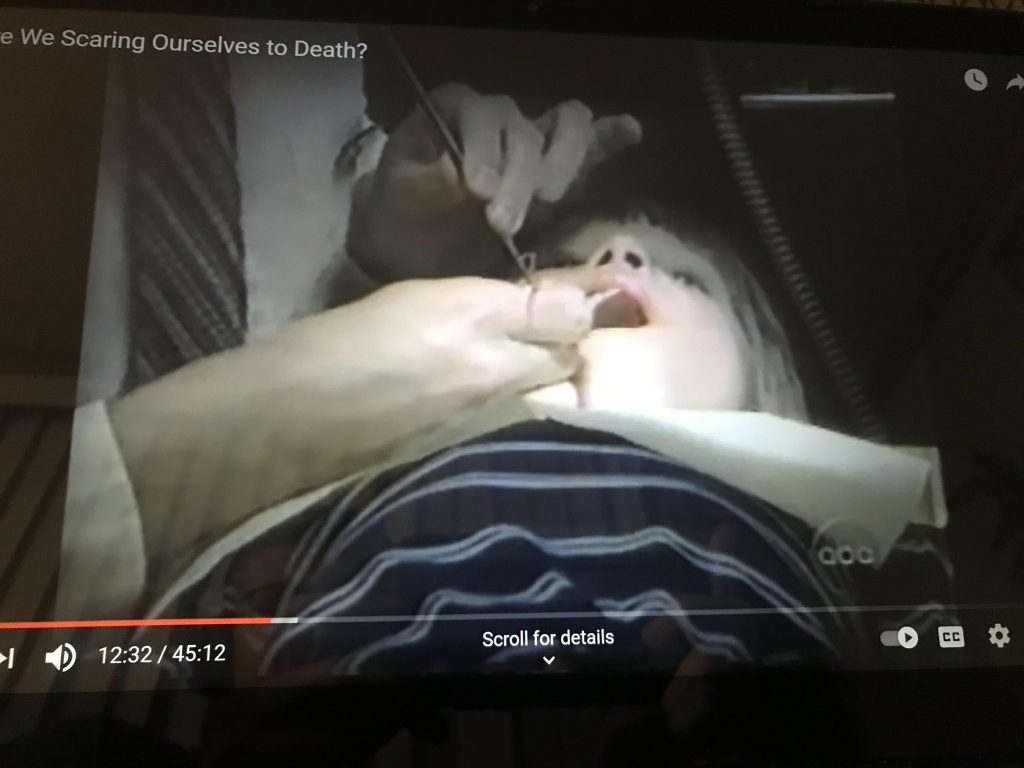
Module 4’s artifact was my favorite of the artifacts. With the media being so prevalent, it has the power to over exaggerate the problems we face. In the video, “Are We Scaring Ourselves to Death?”, it showed how much inflation on crime reports can have a heavy impact on communities. In the picture, a child is having identification numbers imprinted on his teeth in case the child is murdered. This image alone showed the dangers of overemphasizing crime rates. This can implant the idea that no one is to ever be trusted.
This artifact helped me learn how heuristics can influence us to believe in something even if it isn’t real. It showed the dangers of always taking what the media says at face value. The image showed how far we can go about keeping our kids safe if we believe they are always in danger.
